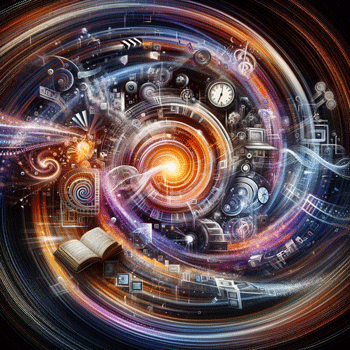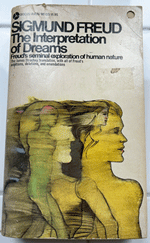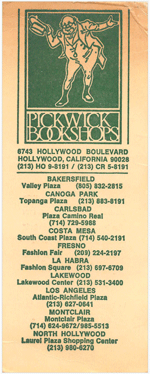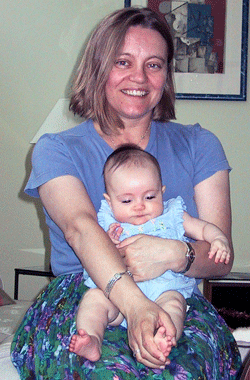Time travel — analog and digital
The right stimulus makes the present disappear, but how are analog and digital moments of time travel different?
By Brad Berens
 Typically, we imagine time travel as deliberate, if often improvisational: Marty jumps into the DeLorean to escape the bad guys; the Enterprise crew kidnaps whales from twentieth century California; Sam Beckett puts right what once went wrong, and The Doctor does his Time Lord thing.
Typically, we imagine time travel as deliberate, if often improvisational: Marty jumps into the DeLorean to escape the bad guys; the Enterprise crew kidnaps whales from twentieth century California; Sam Beckett puts right what once went wrong, and The Doctor does his Time Lord thing.
That’s how fictional time travel works, but in real life we’re all time travelers moving forward one second at a time…until we’re not. In a mere moment we can find ourselves in the past, at old destinations that can have any flavor: abrupt, sad, pleasant, happy, curious.
I time traveled twice on Friday; each trip had a different shape. It ain’t Proust biting into a cookie, but I want to share those experiences, how they were different from each other, and what that says about how analog and digital experiences work.
Trip #1: the bookmark (analog)
 My son William, a psych major, home for Spring Break, went to the garage bookshelves (we have a lot of books) to find a copy of Freud’s Interpretation of Dreams (right).
My son William, a psych major, home for Spring Break, went to the garage bookshelves (we have a lot of books) to find a copy of Freud’s Interpretation of Dreams (right).
He left it on the kitchen counter. I picked it up, and out dropped an old bookmark that had been there since the day of purchase (lower right).
Until I saw the bookmark, I had presumed this was La Profesora’s book, but she grew up in Oregon, and Pickwick Bookshops were very much a SoCal chain. I had bought it.
Together, the cover of the book and the bookmark told me a lot. At $1.95, that paperback was old even when I bought it. A quick visit to Perplexity told me that the last Pickwick Books shut up shop in 1995, even though it had long since become a B. Dalton. (Only readers of a certain vintage will remember B. Dalton Bookseller, which is where I had my first job.)
 Holding the bookmark, a combo-platter of memory and scrutiny filled in some blanks. I have always been a book hound, but since I met Fred Crews early in grad school I haven’t had much use for Freud. J. Allan Hobson’s brilliant The Dreaming Brain supplanted Sigmund as my go-to source for research about dreams after it came out in 1988. That meant I had bought the book in late high school or college.
Holding the bookmark, a combo-platter of memory and scrutiny filled in some blanks. I have always been a book hound, but since I met Fred Crews early in grad school I haven’t had much use for Freud. J. Allan Hobson’s brilliant The Dreaming Brain supplanted Sigmund as my go-to source for research about dreams after it came out in 1988. That meant I had bought the book in late high school or college.
I have no direct memories of Pickwick Books, but floating back to that time I remembered numberless trips to bookstores with my lifelong friend Matthew Henerson, so my best guess is that Matt and I visited either the North Hollywood or main Hollywood stores… possibly both, at one of which I picked up the Freud book.
This was when the independent bookstores of Los Angeles were dying like Mayflies all at the same time (only without the sex beforehand). Before Crown Books ruined everything, and before Amazon killed Crown, L.A. was a book lovers paradise. Today, when I’m in L.A., I still think of Alpha Books, Dangerous Visions, Dutton’s, and many more as I drive past their old locations.
L.A. is like that: a palimpsest where you see the outlines of what used to be almost as much as what’s there now.
Trip #2: the photograph (digital)
 For mysterious reasons, my iPhone displays random pictures from time to time in no predictable or obvious pattern. On Friday, it showed me this:
For mysterious reasons, my iPhone displays random pictures from time to time in no predictable or obvious pattern. On Friday, it showed me this:
It’s a picture of my friend Jane holding my baby daughter Helena from August 11, 2001, when Helena was five months old (one month before the 9/11 attacks). Unless, as one friend speculated, Apple surfaced something to everybody who had a picture from that day (unlikely), it seems truly random.
As with the bookmark, I have no direct memory of taking that picture, nor do I have a particular memory of that visit with Jane and Cyn, her then-partner/now-wife, who were down from Oakland.
Also like the bookmark moment, memory and scrutiny filled in some blanks. The picture is in our old house in Encino, in the living room, with the old upholstery on our dining room chairs. We still have the glass table behind Jane’s right hip and the painting over her left shoulder.
However, unlike the bookmark moment, I had immediate access to more specific information simply by grabbing my iPhone and scrolling… and scrolling… and scrolling.
Cyn was there, too, that day, wearing a purple dress and holding Helena with a satisfied smile. This was also right before Jane dramatically changed her hair, which I know because of pictures from another visit a few weeks later. Also, I had entirely forgotten that in that later visit Jane and Cyn were in town from Oakland at the same time that my in-laws were visiting from Portland. If you had asked me beforehand if Jane and Cyn had ever met my in-laws, I would have said no.
Analog vs. Digital
Both time travel trips provoked reconstruction of memories rather than retrieval (an important distinction in Why We Remember by Charan Ranganath, which I’m in the middle of reading).
In both cases, the memories prompted me to reach out to other people. I texted the picture to Cyn. With the bookmark, I immediately showed it to La Profesora. Later, after I’d scanned it, I texted a picture to Matt and a few other Angelenos who would remember Pickwick. All replied quickly and with nostalgia.
In real life we’re all time travelers moving forward one second at a time…until we’re not. In a mere moment we can find ourselves in the past, at old destinations that can have any flavor: abrupt, sad, pleasant, happy, curious.
There are also differences: when the picture popped up, it confused me because I didn’t understand the intent behind Apple surfacing it—how random was it really? Do other people get this? Also, as I reconstructed the memory, the context stayed narrow: other pictures on my iPhone of that visit and other visits.
The bookmark falling out of the book didn’t confuse me because I knew how it happened: William got the book out of the garage. Although random, finding the bookmark connected different eras of my life—my own high school and college days thinking about psychology and dreams parallels my son’s similar era that is happening right now. There’s meaning beyond mere nostalgia there.
Also, the context of my memory reconstruction with the bookmark was more expansive: I thought of Matt because of our many bookstore jaunts and about the dear dead days of L.A.’s indie bookstore scene.
The takeaway, here—something that I’ve both written about before and will continue to explore—is that there are qualitative differences between analog and digital experiences. Digital experiences are frictionless, engaging mostly sight and sound. Analog experiences have a lot of friction and engage all our senses, including smell and taste, which have always surprising power to send us falling backwards in time (like Proust and that cookie).
There are, of course, hybrid experiences that fuse digital and analog, as anybody who has ever shown a picture or video or meme on a smartphone to another person already knows.
I suspect that because of their inherent friction analog experiences have more immersive power, less multitasking, and gather more focused attention, however briefly.
Analog time travel trips range farther, go deeper, and have more potential to startle us into a smile, a tear, or to think of old friends.
We learned to embrace the digital during COVID lockdown. Since emerging back into the world, we are newly able to luxuriate in the concrete, which is a blessing.
__________

Brad Berens is the Center’s strategic advisor and a senior research fellow. He is principal at Big Digital Idea Consulting. You can learn more about Brad at www.bradberens.com, follow him on Post and/or LinkedIn, and subscribe to his weekly newsletter (only some of his columns are syndicated here).
See all columns from the Center.
April 3, 2024

